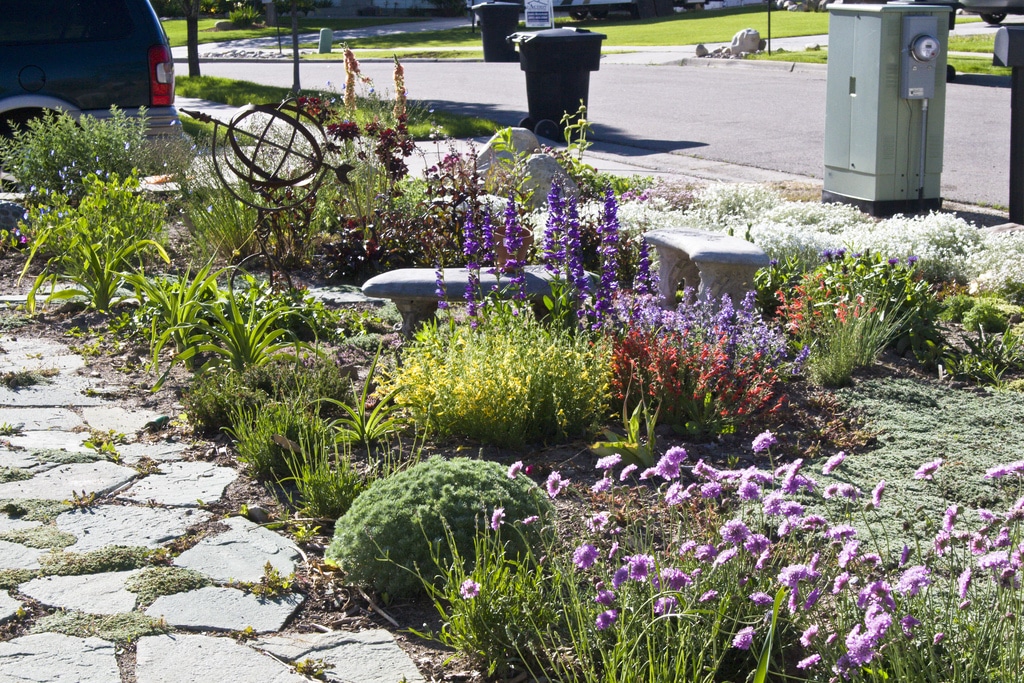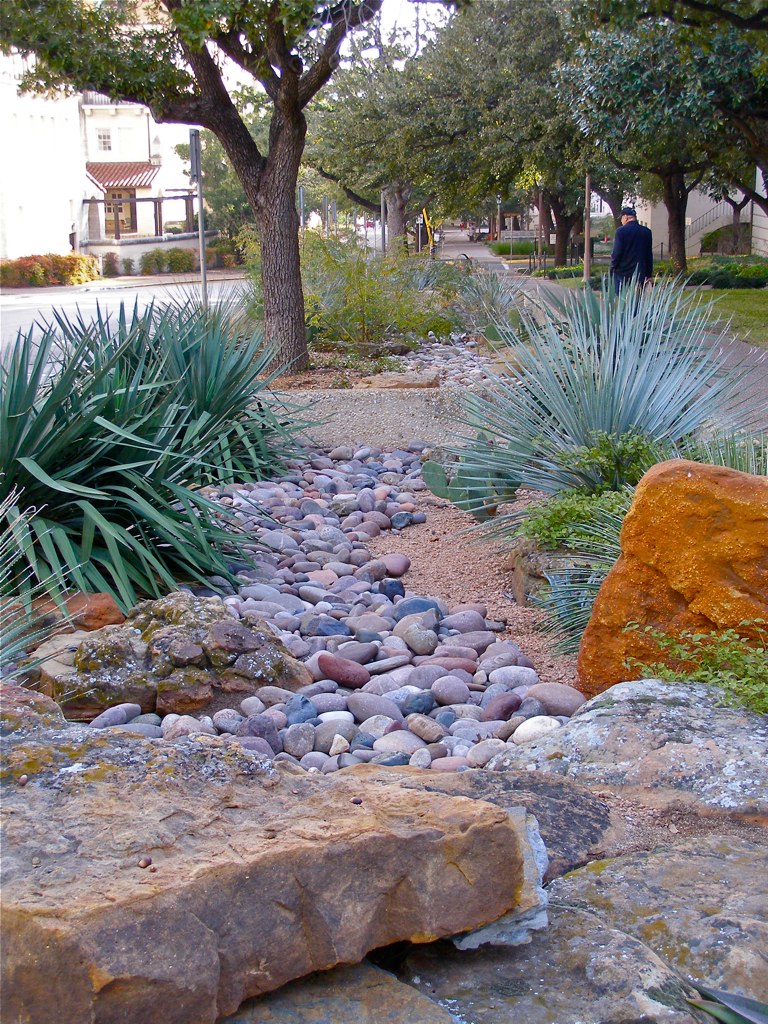Drought-resistant landscaping is the new American culture, and many look for ways to start xeriscaping on a budget. Some might find it hard to give up the “lush green yard.” Universities, churches, and commercial buildings like cozy curb appeal and presentation can help sell a message, introduce a persona to your business, and demonstrate commitment to conservation. Still, as more cities adopt stormwater utility fees, higher water bills, and water restrictions, it makes perfect sense for property owners to transition to sustainable landscaping designs. Can this get pricey? Yes. However, we show you ways to incorporate stormwater incentives to make your xeriscaping on a budget a doable process.
What is xeriscaping?
Water restrictions are necessary to maintain neighborhood resilience, with year-long droughts hitting many areas. Xeriscaping cuts down on watering and lawn maintenance by eliminating plant life that demands more watering. Xeriscaping design ideas include removing grass areas in a yard and replacing them with rock designs, different soils, and native plants that retain water.
Xeriscaping Design Ideas
Xeriscaping often comes with the connotation that you are taking a lawn and turning it into cacti and rock situation. While this might be fitting and stunning in areas like Arizona and Utah, you may not want that particular southwest aesthetic. Not to worry, there are many different types of plants for xeriscaping. The concept doesn’t have to be succulents or cacti but merely native plants that can withstand drought.
Sustainable landscaping doesn’t have to mean ripping out all of your grass. You can find ways to incorporate rock, mulch, and grass and still manage your watering needs and even stormwater runoff.

What people assume it will look like

There are numerous variations and designs with xeriscaping native plants.
The Benefits of Xeriscaping
Xeriscaping is a level of sustainable landscaping that can include xeriscape plants to attract pollinators, prevent water runoff (and, in return, water pollution), add minerals to soils, and still resale curb value. The number one benefit of a xeriscaped yard is its low maintenance costs. This helps save on any maintenance needed for erosion, foundation cracks, etc. Of course, xeriscaping can save water! These lawns take less watering and, with specific designs, can prevent water damage and water pooling in a yard.
The Disadvantages of Xeriscaping
The main disadvantage of xeriscaping is that it might not meet your desired look. People love green lawns. Seeing certain lush plants and flowers as you walk into your office can make you happy and cheerful. Xeriscaping is a different approach to landscape design, and adjusting to a new setting might not be on the top of your list.
The other disadvantage is that taking your yard from grassy to rocky can get very expensive! On average, a xeriscaped 1200 sq ft yard is around $18000. Of course, it depends on the work you want, the yard size, if you hire a designer, your contractor, etc. Still, this price point is enough to turn many property owners away, but there are specific things you can do to reduce the costs of xeriscaping your property.
Xeriscaping on a Budget
Xeriscaping designs can incorporate stormwater management practices like dry creeks, bioretention, rain gardens, and permeable pavers. Using green infrastructure in your project means you likely qualify for a local incentive program to pay you back for incorporating these sustainable practices. You can use our search engine to find a designer, contractor, and incentive program! We will show you local incentive programs based on the technologies you plan on using. (We’re also the only place only with this type of database.) or maybe you want to look at ideas and understand them better. Either way, using our incentive match search engine can get you started.
Xeriscaping Using Stormwater Incentives
Let’s break down what projects you can include in your property design to get your money back.
Dry Creeks
Dry creeks can be used to build pathways and spirals in your design. While there are no specific incentive programs for dry creeks, dry creeks are usually included in landscaping with rain gardens, bioswales, or replacements for removing pavement (all of which have incentive programs to back them up).
Rain Gardens/Bio Retention/Natural Landscaping
Incentive programs for “natural landscaping” are growing across the US. The benefits of using native plants are that they require less water because they are already adaptable to the climate. Plus, they attract pollinators and help cross-pollinate and produce a healthy ecosystem. When xeriscaping, you are including natural and native landscaping so you can qualify (depending on some restrictions) for rebates or grants.
Another method to help pay for your xeriscaping project is removing pavement or installing permeable pavers. There are incentive programs that will pay you back or lower your stormwater utility bill if you remove hardscapes (pavements like asphalt and concrete) from your yard.
If digging up your soils and implementing new plants is not for you, considering paving over and creating patio areas, consider doing it with permeable pavers. For one, permeable pavers last longer than traditional patio materials. Second, if it ever does rain, these pavers soak the water back into your landscape, helping to strengthen your soils and stop pooling in your area.
When creating a drought-resistant landscape, yes, it can be pricey. In the long term, there is less maintenance, property damage, and water runoff, and these types of projects CAN be paid for by being creative with stormwater incentives.
Not sure what incentives are offered in your area? Type in your property to search for what is available to you. Also, keep in mind incentive programs have open application dates and can run out of money depending on demand. You want to be proactive about applying, and we can help guide you along the way if you create your free Rainplan.


